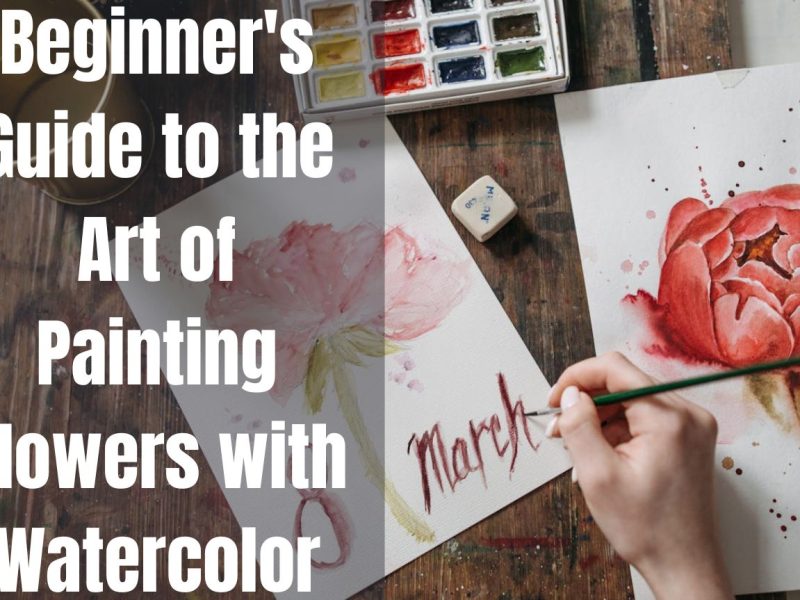Watercolor painting is a popular art style known for its ethereal properties, delicate washes, and vivid layers. Whether you’re an experienced artist or a beginner, having the appropriate supplies can make all the difference in your watercolor adventure. This blog post discusses the essential watercolor supplies, ensuring you have all you need to produce your next masterpiece.
Understanding Watercolor Supplies
Before venturing into the world of watercolors, it is critical to learn the tools of the art. The quality and type of supplies you use can majorly impact the finished artwork.
The Essentials of Watercolor Supplies
Watercolor Paints – Tubes vs. Pans
Watercolor paints come in two varieties: tubes and pans. Tubes hold liquid paint and are ideal for mixing huge amounts of paint, whereas pans are solid blocks of paint that are portable and useful for quick sketches and outdoor painting. Tubes let you create custom palettes and are more brilliant, but pans are less expensive and easier for those new to watercolor.
Brushes – The Artist’s Trusted Tool
The brush is the artist’s primary tool, and there are several types to pick from. Round brushes are adaptable and may be used for various strokes; flat brushes are ideal for washes and powerful strokes; and fine-tip brushes are important for detail work. Natural hair brushes, such as sable, hold more water and pigment, resulting in a smoother application, although synthetic brushes are more cost-effective and durable.
Building Your Watercolor Toolkit
Choosing the correct tools can help improve your painting experience and the quality of your work.
Selecting the Best Watercolor Paper
Paper Weight and Texture:
The paper serves as the base for all watercolor paintings. Watercolor paper is classified by weight, with heavier papers being more absorbent and less likely to distort. The texture of the paper is also important; cold press paper has a slight texture that works well with a range of techniques, hot press paper is smooth and great for intricate work, and rough paper has a prominent texture that lends character to washes.
The Role of Palettes and Mixing Trays
Keeping Your Colors Pure:
A palette is where you mix and blend different colors. It is vital to have a palette with a level surface and wells for color separation. Some palettes include a lid, which can help keep your paints moist and protected.
Advanced Watercolor Supplies
As you grow in your watercolor adventure, you may wish to use new tools that might bring unique effects to your paintings.
Enhancing Your Art with Additional Tools
Masking Fluid and Tape:
Masking fluid is a liquid latex solution used on paper to preserve white regions or specified shapes. Once the painting has dried, the masking fluid can be removed, showing the untouched paper beneath. Similarly, tape can be used to make crisp margins and borders.
Sponges and Other Texturizing Tools:
Sponges can be used to dab and lift paint, resulting in textures such as vegetation or clouds. Other texturizing tools include salt, which can be sprinkled on wet paint to create a starburst effect, and plastic wrap, which can form intriguing patterns when pressed into wet paint.
Caring for Your Watercolor Supplies
Proper care and maintenance of your supplies will ensure they last longer and are ready for your next painting session.
Maintenance and Storage Tips
Cleaning and Preserving Brushes:
After each painting session:
- Rinse your brushes with water and soap.
- Reshape the bristles and let them dry horizontally to keep water from releasing the glue in the ferrule.
- Store them in a brush holder with the bristles facing up to keep them in shape.
Storing Paints and Paper:
To avoid drying out your paints, store them in a cool, dry spot away from direct sunshine. Watercolor paper should be kept flat to prevent bending or curling, which can make painting more difficult.
FAQs for Watercolor Supplies
To conclude this course, let us answer some often-asked questions concerning watercolor supplies.
What are the best watercolor supplies for beginners?
Beginners should start with a basic set of watercolor paints, several brushes, watercolor paper, a palette, and a mixing tray. You can supplement your toolset with additional supplies as you get more experience with the medium.
Can watercolor painting be done on normal paper?
Regular paper can be used; however, it is not recommended because it may distort or deteriorate when wet. Watercolor paper is specially developed to withstand water and pigment, resulting in a better painting experience and outcome.



